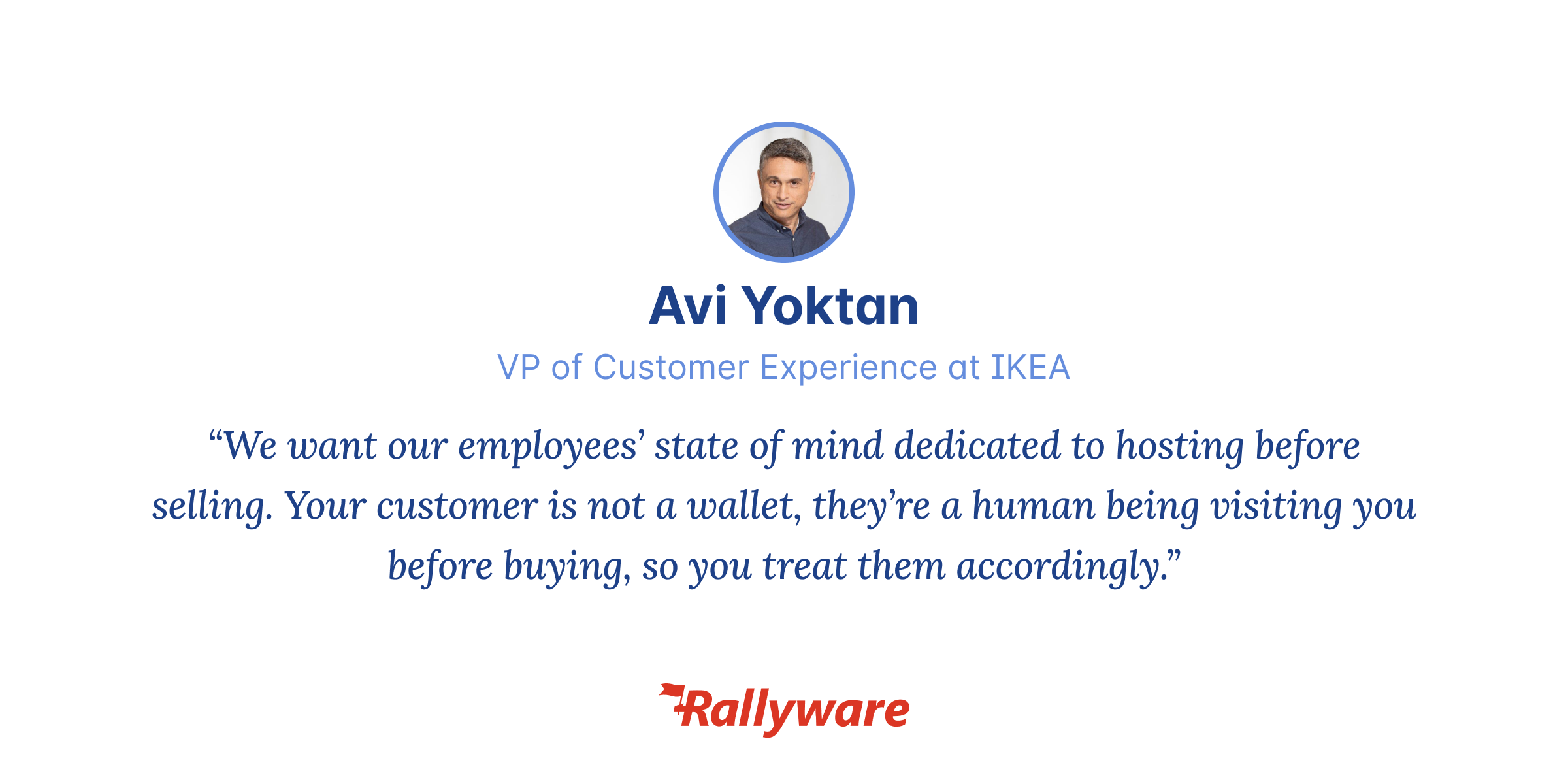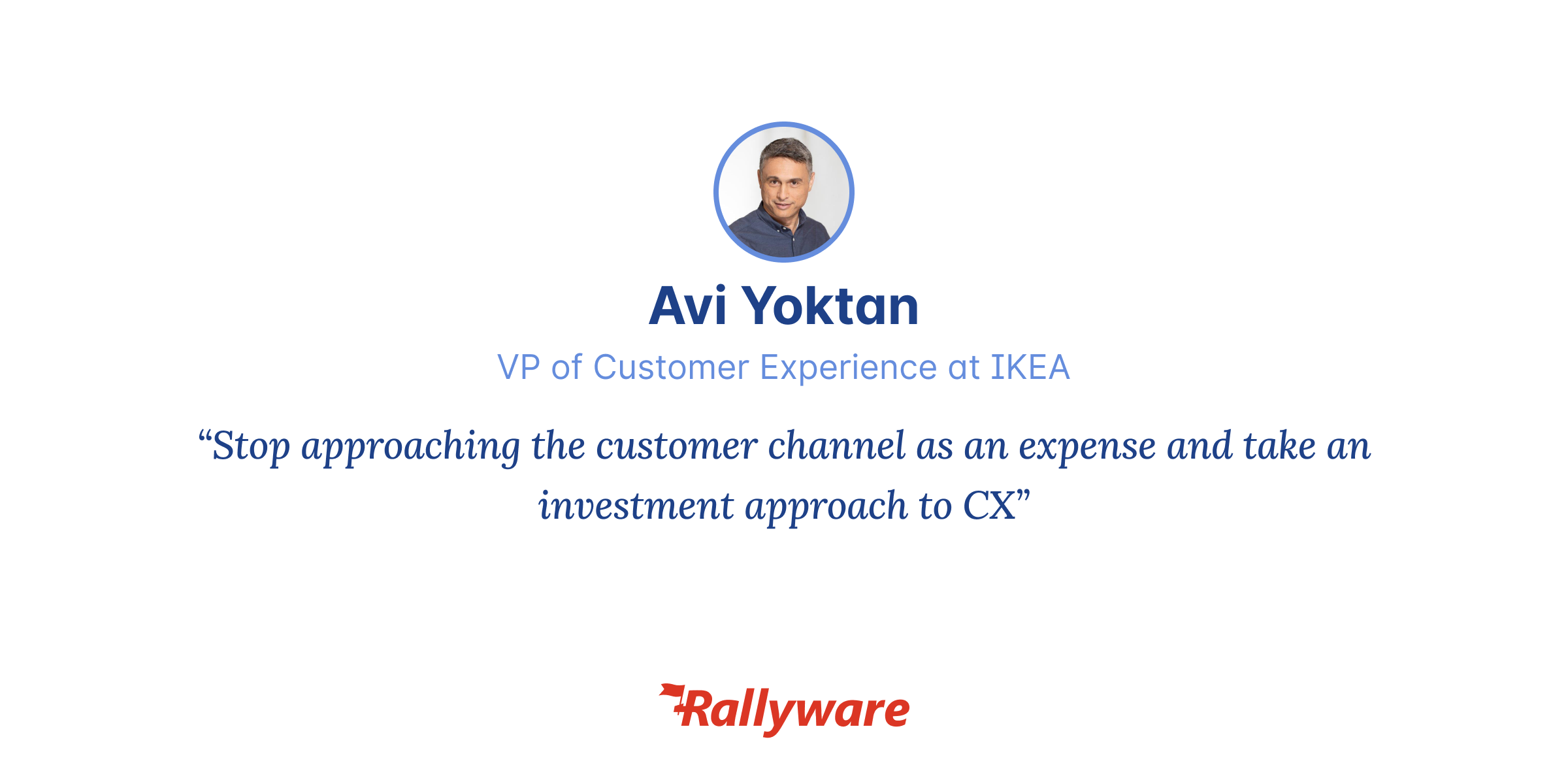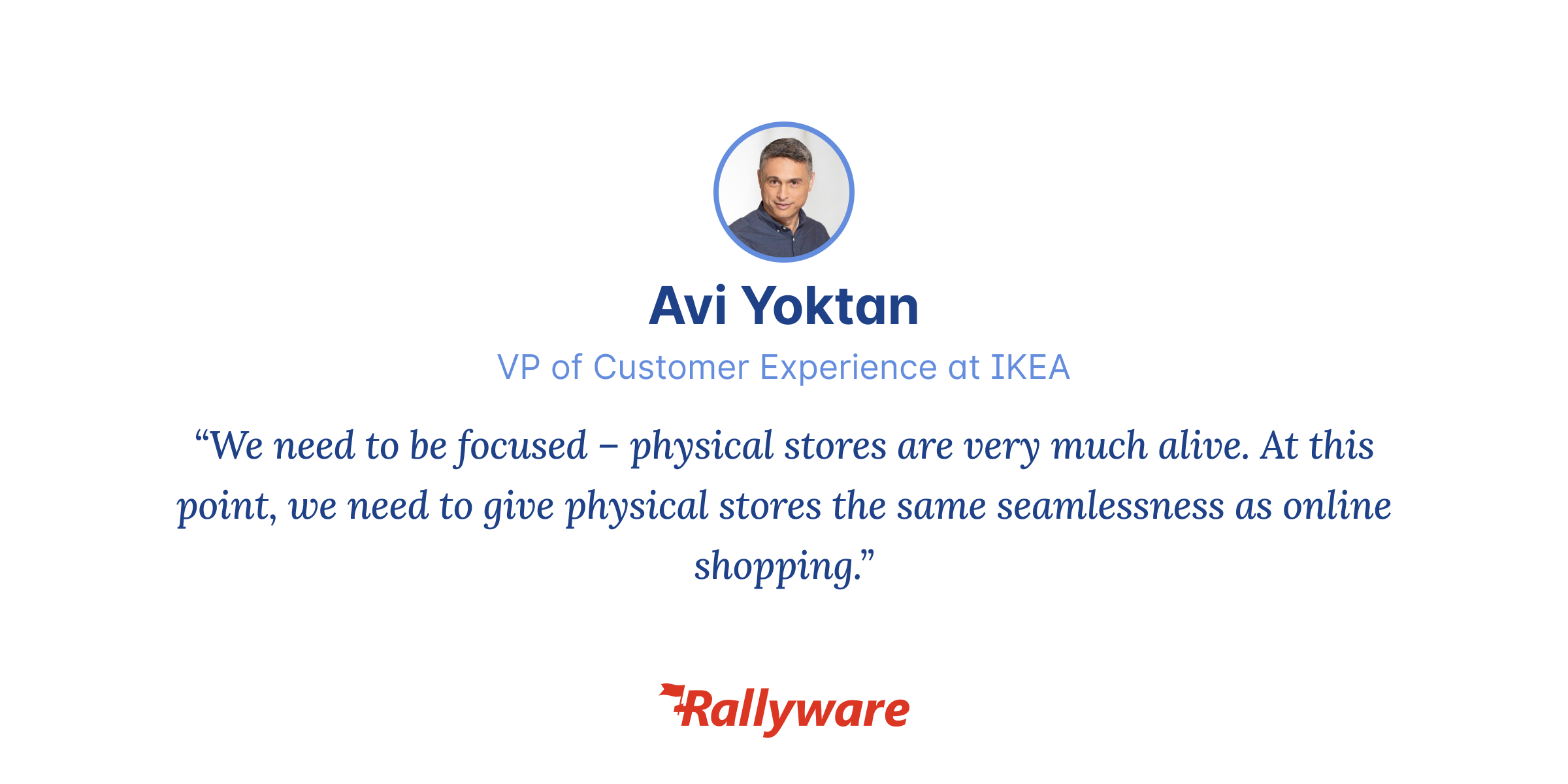Target, REI & Nordstrom CEOs: frontline enablement technology is non-negotiable
CX and In-Store Retail Technology with IKEA’s Vice President of Customer Experience
In the age of data-powered everything, X, for experience, is a letter seen with increasing frequency in all spheres of organizational management. Greater and greater availability of data and the ever-increasing sophistication of its applications has allowed companies to expand their conceptions of how to approach everything from learning and development to branding, and for good reason. The experience model takes into account the complexity of its end users, understanding that any product is in fact an interrelated process of many components. Your impression of a coffee shop has as much to do with the length of the wait, the design of the space, the ease (or difficulty) of ordering, and on, as much as the quality of what ends up in your cup. Retail employee training ends up being crucial to a customer’s impression of a cappuccino.
Customer Experience (CX), per McKinsey, refers to “everything an organization does to deliver superior experiences, value, and growth for customers.” Per the coffee example, CX sees the delivery of a product as a journey, and accounts for the touchpoints of every step from onboarding the customer to any post-sale follow-up. In a retail climate defined by “certain uncertainty” and consumer behavior changing rapidly in response to global upheavals and economic headwinds, connecting with shoppers emotionally via CX has become more important than ever. And, as McKinsey reports, investing in it has proven wise, producing 3x returns to shareholders.
The question, as ever, is how. How are market leading retailers approaching CX to create the greatest value for their customers and shareholders? One answer is by taking into account another experience unfolding simultaneously with the customer’s: the retail employee’s. The concept of retail employee training has also expanded from the siloed, one-off domain of intermittent professional development sessions to a holistic WX (Worker Experience). Retailers enabling the continuous process of retail employee training, optimizing the journey from onboarding to ongoing incentive and promotion management, are winning at CX by investing in WX. This kind of end-to-end optimization has been made possible by the advent of next-generation retail management software like data-rich performance enablement platforms (PEP).
Avi Yoktan, Vice President of Customer Experience for IKEA, has been thinking about CX for a long time. Beginning his career as a security services consultant, he realized quickly that “it takes more than words and a smile to sell your services.” After investing in “extra mile” customer care, an initiative which included opening a 24/7 call center, his company grew from a small business to a leading security services provider with more than 3,000 co-workers. One of his clients was IKEA. After four years of working for the iconic furniture retailer, Yoktan was offered a small role as a security manager. After one year, on the basis of his exemplary performance, he was asked to run CX for the entire company. Over the course of our conversation with Yoktan, we discuss his “visitor, not customer” philosophy of CX, how technology is reshaping in-store retail, and the present and future of retail employee training.
Customers As Visitors and How In-Store Technology Fits In
A hallmark of Yoktan’s philosophy of CX is training retail employees to see IKEA shoppers as visitors rather than customers:
“We want our employees’ state of mind dedicated to hosting before selling. Your customer is not a wallet, they’re a human being visiting you before buying, so you treat them accordingly.”

While this kind of sentiment is easy enough to affirm in theory, is it possible for huge global retailers to deliver on this promise? Considering the challenges of the retail employee labor market — labor shortages, high turnover, low training (33% of retail employees receive no training, per HBR) — is this kind of humanizing idea really actionable? If so, what kind of retail employee training would it require?
Yoktan and other experts point to the unprecedented availability of data to answer these questions. Per McKinsey, advances in technology to serve as “eyes and ears” enable companies to enter a new kind of dialogue with their consumers, allowing retailers to tailor their CX journeys toward individual preferences at scale. Retail management software like PEP can proactively personalize customer journeys in stores by equipping retail employees with up-to-the-minute customer data. Giving in-store retail employees access to this data allows them to provide “contextual interactions” informed by where each individual customer is in their journey. It also enables “journey innovation”— using data to find new sources of value for customers, such as what other products or services they might appreciate.
Embracing customer data in stores allows retail employees to deliver on another tenet of Yoktan’s philosophy: invisibility.
“I am a true believer that customer service is imposed upon customers because of failures in the design of the business or its management. No one wants ‘customer service’— you just want to buy and enjoy without the need to contact call centers, etc. So the best customer care is “invisible” to the customer— it’s supporting the customer experience without having them take an active role in the process.”
When CX is using data effectively, retail employees can anticipate needs and services ahead of customers, making the journey to purchase both easy and enjoyable.
Proactively Investing in CX and Retail Employee Training
When it comes to the biggest lessons of his career in CX, Yoktan points to critical mindsets around leadership and investment:
“It’s very simple— if you want to be a market leader you need to act like one. Stop approaching the customer channel as an expense and take an investment approach to CX. “

A proactive approach to CX investment and employee retail training has been championed by experts across the field. According to John Straw, serial technology entrepreneur and leading speaker on disruption, the future of retail belongs to retailers that boldly invest in “cutting-edge technology—not worrying about how it affects the P&L but about how it’s going to affect the value of the business to the consumer.”
Institutional unwillingness to invest in something that doesn’t immediately “bring a load of cash onto your balance sheet” is a mistake, says Straw, and idea born out by the failure of major retailers that focused on operations rather than innovation like Sears, Toys “R” Us, Radioshack, and Debenhams. Per Bain’s report on the future of retail, a major cause for these retailers’ bankruptcy or insolvency was alienating customers by repeatedly cutting service levels.
Taking these retailers as cautionary examples, it makes sense that Yoktan and Straw share a proactive approach to investing in CX and retail employee training.
“Retail in 2023 is favoring big brands who can provide a complete topline experience. This involves big money investments,” says Yoktan. “I believe that the tech is there now. It’s now about the willingness to make the investment necessary to implement it,” echoes Straw.
Digital Transformation and the Future of Physical Stores
For years, physical stores have taken a backseat to online channels when it came to digital transformation. While retailers poured money into their ecommerce arms, physical locations remained largely unchanged and therefore unable to meet the needs of modern consumers looking for personalized, brand value-aligned shopping experiences.
In 2023, it seems many retailers are realizing what Yoktan has known all along: digital transformation is necessary for in-store retail, too: “Physical stores are very much alive. At this point, we need to give physical stores the same seamlessness as online shopping.”

In an interview with HBR, Marc-Andre Kamel, a Paris-based partner who heads the global retail practice at Bain & Co., used department stores to illustrate the challenges and opportunities of in-store digital transformation:
“I don’t think department stores will completely disappear. There is value in creating an edited assortment for customer segments looking for the editing and curation that department stores bring. Many of these big retailers that are failing have lost sight of who the customers are they want to delight. They try to delight everyone, but they fragment their resources and wind up delighting no one.”
Kamel goes on to describe that retailers who’ve been slow to embrace digital optimization must both “clarify their ambition and identify the customer target they’re going after.” Of course, as discussed above, even with a clear vision of their target customer, retailers will struggle to serve these customers if retail employees lack the tools to deliver. Again, it all boils down to data.
“The main reason consumers prefer to shop in physical stores is, according to KPMG, to see, experience, and test products in person before buying. A physical location can dispel doubts and help close the sale. But you need to use data to create better experiences,” says Yoktan. “Interactive content is an exciting development in this regard. Encouraging visitors with personalized content leads to spending more time and money with your business and better brand association.”
Yoktan emphasizes, however, the delicate balance between people and technology. Digital transformation is a means to an end, not an end in itself. At the end of the day, retail management software is a tool to give retail employees what they need to deliver on company vision and goals. “Your most valuable asset is your coworkers’ competence – invest in that,” he says.
Get a demo of Rallyware’s platform to see how smart-triggering the right activity for the right person at the right time has been driving business results for the leading companies with large workforces, at scale.
News and Insights on Workforce Training & Engagement
We’re among top-notch eLearning and business engagement platforms recognized for effective training and talent development, helping to empower distributed workforces
Subscribe
